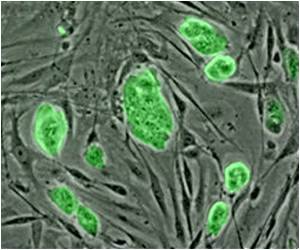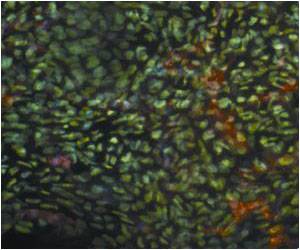
Denise Montell, Duggan Professor of Molecular, Cellular and Developmental Biology at UCSB, and colleagues studied the ovaries of fruit flies in order to see stem cells in their natural environment. Because these organisms are excellent models for understanding stem cell biology, researchers were able to shed light on the earliest stages of follicle cell differentiation, a previously poorly understood area of developmental biology. "It is clear that the fundamental principles that control cell behavior in simple animals are conserved and control the behavior of our cells as well," she said. "There is so much we can learn by studying simple organisms."
Using a nuclear protein expressed in follicle stem cells (FSCs), the researchers found that castor, which plays an important role in specifying which types of brain cells are produced during embryonic development, also helps maintain FSCs throughout the life of the animal. "Having identified this important protein molecule in fruit flies, we can test whether the human version of the protein is important for stem cells and their daughters as well," said Montell. "The more we know about the molecules that govern stem cell behavior, the closer we will get to controlling these cells."
Her research team placed the evolutionarily conserved castor (Cas) gene, which encodes a zinc finger protein, in a genetic circuit with two other evolutionarily conserved genes, hedgehog (Hh) and eyes absent (Eya), to determine the fates of specific cell progeny (daughters). What’s more, they identified Cas as a critical, tissue-specific target of Hh signaling, which not only plays a key role in maintaining follicle stem cells but also assists in the diversification of their progeny.
Source-Eurekalert














